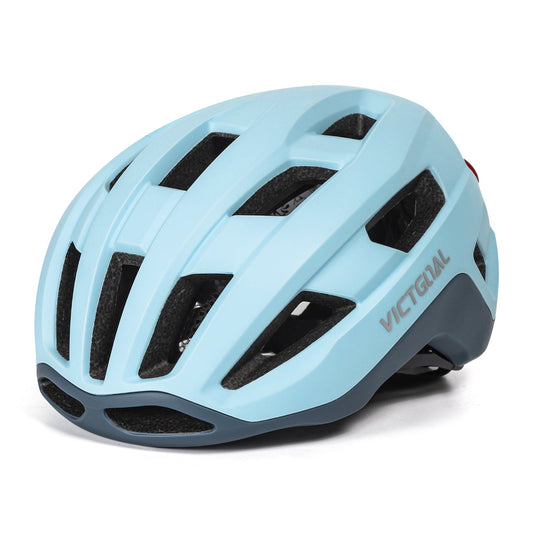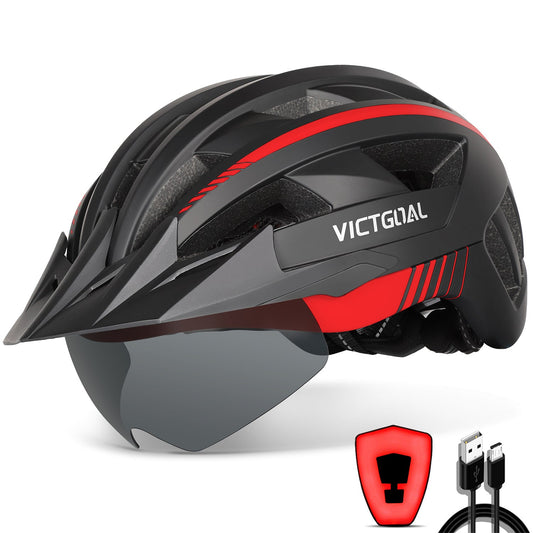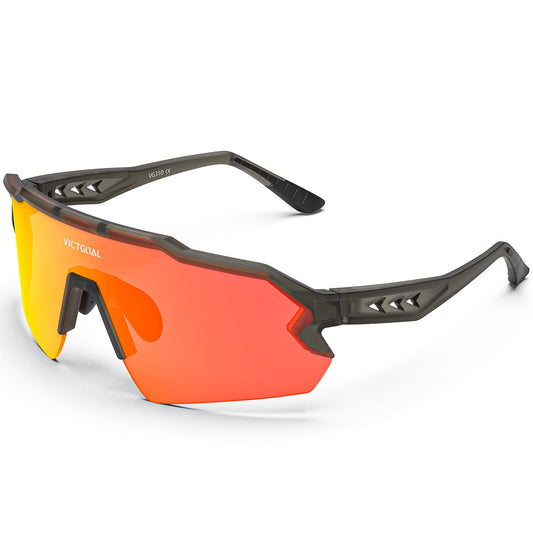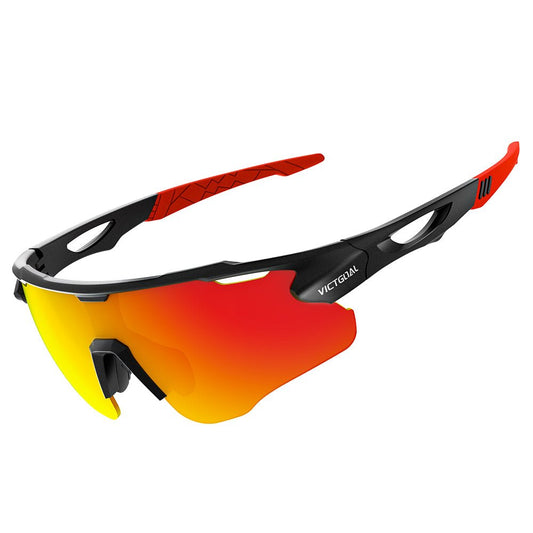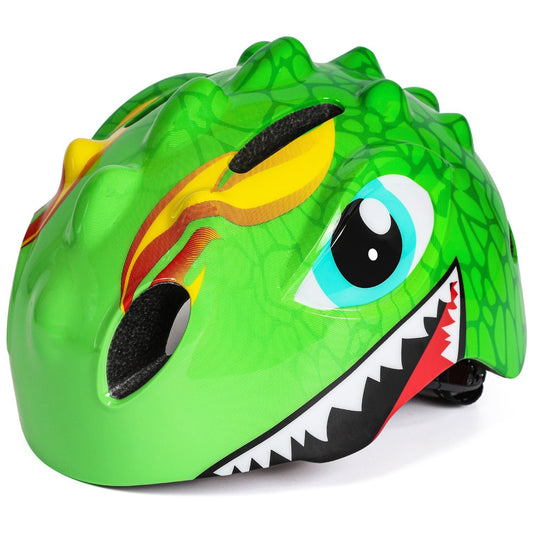
How Bicycle Helmets are Made?
Share

Liners
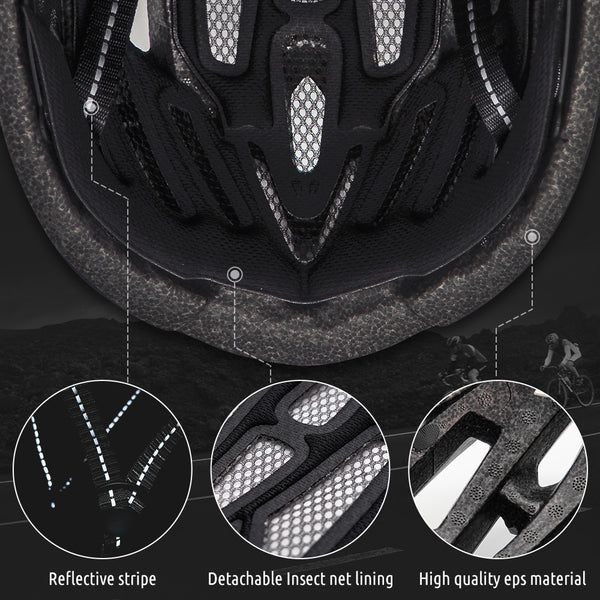
The liner is the most important part of the helmet, the foam layer where the energy of the crash is managed.
Bicycle helmet liners are mostly molded in Expanded Polystyrene (EPS) foam. For the cheaper helmets that make up the largest part of sales in the US market, the techniques are standard ones used in the industry's "foam shops" for making all sorts of EPS parts. Granules of EPS known as "bead" are placed in a mold and expanded with steam and pressure into the familiar picnic cooler foam. Although this is mostly done in China now, there are several European manufacturers and one large US company making several million helmets per year in Rantoul, Illinois, in facilities sold to them by Bell.
Still within the EPS world, the top end helmets require internal reinforcement, usually to open up larger vents, and the techniques for including the reinforcements in the mold and getting them to line up correctly are critical to the manufacturing process. Those techniques are proprietary secrets. Manufacturers use a variety of materials such as nylon, polypropylene or even metal or metal mesh for reinforcement. The first bicycle helmet to use this technique was the ProTec Mirage, a late 1980's model, and it used a nylon mesh. The reinforcement is normally buried in the foam and the user may not even be aware that it is there, but it is essential to keep the models with larger vents from splitting on impact. The use of mesh reinforcement should not be confused with the European practice of providing bug net in the front vents, since many of those nets are simply thin fabric mesh adding no strength.
EPS can be made in layers with different densities to tune impact management, permitting softer layers to crush in lesser impacts and harder layers to handle the really bad hits. In some cases the density is varied around vents or certain areas of the helmet to permit the helmet to meet impact standards while thinning the liner.
Some other foams have begun to emerge in the bicycle helmet market, including Expanded PolyPropylene (EPP), Expanded Polyurethane (EPU or PU), rate-sensitive slow rebound foams and more. We have a page up on that technology. Each type has different manufacturing techniques.
Shells
The shell for inexpensive helmets is just stamped PET (the material used for bottled water containers) or a similar plastic. It is usually glued onto the liner, then taped around the edge for appearance, although some use no glue and others have no tape.
For more expensive helmets the shell is included in the mold when the liner is expanded from the bead, and must therefore be polycarbonate or another higher quality plastic that can take the heat of the mold (PET would melt). Really sophisticated techniques can add more than one shell section to the mold, and up to five pieces can provide shell protection for the lower section of a helmet, or even the interior. In this case no glue is necessary, since the shell is bonded to the liner in the mold. This technique could yield stronger helmets, but the designers use it to open up larger and larger vents and reduce the foam, eventually just meeting the current impact standard. We have a page up on molded-in-the-shell helmets.
Skate-style helmets and a few bicycle-style helmets have hard shells made of ABS or polycarbonate plastic. BMX helmets (and a few older bicycle helmets) can have composite hard shells, with layers of fiberglass or even kevlar fiber laid up in an epoxy. ABS is molded, but Fiberglass shells are generally laid up by hand.
Straps
Helmet straps are generally made of nylon or polypropylene. They all look similar, but vary considerably in fabric, surface finish, weave and other subtle characteristics. For helmets with glued-on shells they are added to the liner before the shell is glued on, and usually run across the top of the liner, covered by the shell, or occasionally over the top of the shell. This is not possible when a helmet is molded in the shell, since the heat of the molding process would damage the webbing. Straps are added to the helmet after it comes out of the mold, usually with a more sophisticated anchor that sits on top of the helmet shell after the strap is threaded through. Helmets with hard shells usually have the straps riveted or otherwise attached to the shell.
Attached to the rear of most middle to high-end helmets is an occipital stabilizer, varying from just a strap to a complex plastic piece, that engages the occipital lobe of the head (the lump on the back of the head). These can have many forms of adjustment, including knobs, cams, toothed sliders and more.
The buckle is the last major piece of the helmet, and it is added when the straps are installed. Most current bike helmet buckles are plastic or nylon buckles of the Fastex type (a trademarked ITW/Nexus brand) with side pinch release. Some BMX helmets use a motorcycle-style D-ring buckle, requiring the user to thread the strap end through two D-shaped metal rings.
Interior
Bike helmets made with the ring fit system are fitted with an adjustable ring of some kind inside. Those with fitting pads usually get hook-and-loop mounts glued in, then the pads are added. Some cheap helmets have the pads glued directly to the interior of the liner. A few have an interior cloth or plastic liner applied. BMX helmets made in the motorcycle style often have more complicated full interior liners that can be removed for cleaning.
Assembly
Assembling the parts is the next step. This is normally hand labor, and for cost reasons probably well over half of the world's bicycle helmets are made in China or other Asian countries. At least 4 million are still assembled in the US, and an unknown number in Europe, due to high shipping costs from Asia. As noted above, the shell may be glued or not, and taped around the edge or not.
Finish
After assembly, the helmet is normally finished of

